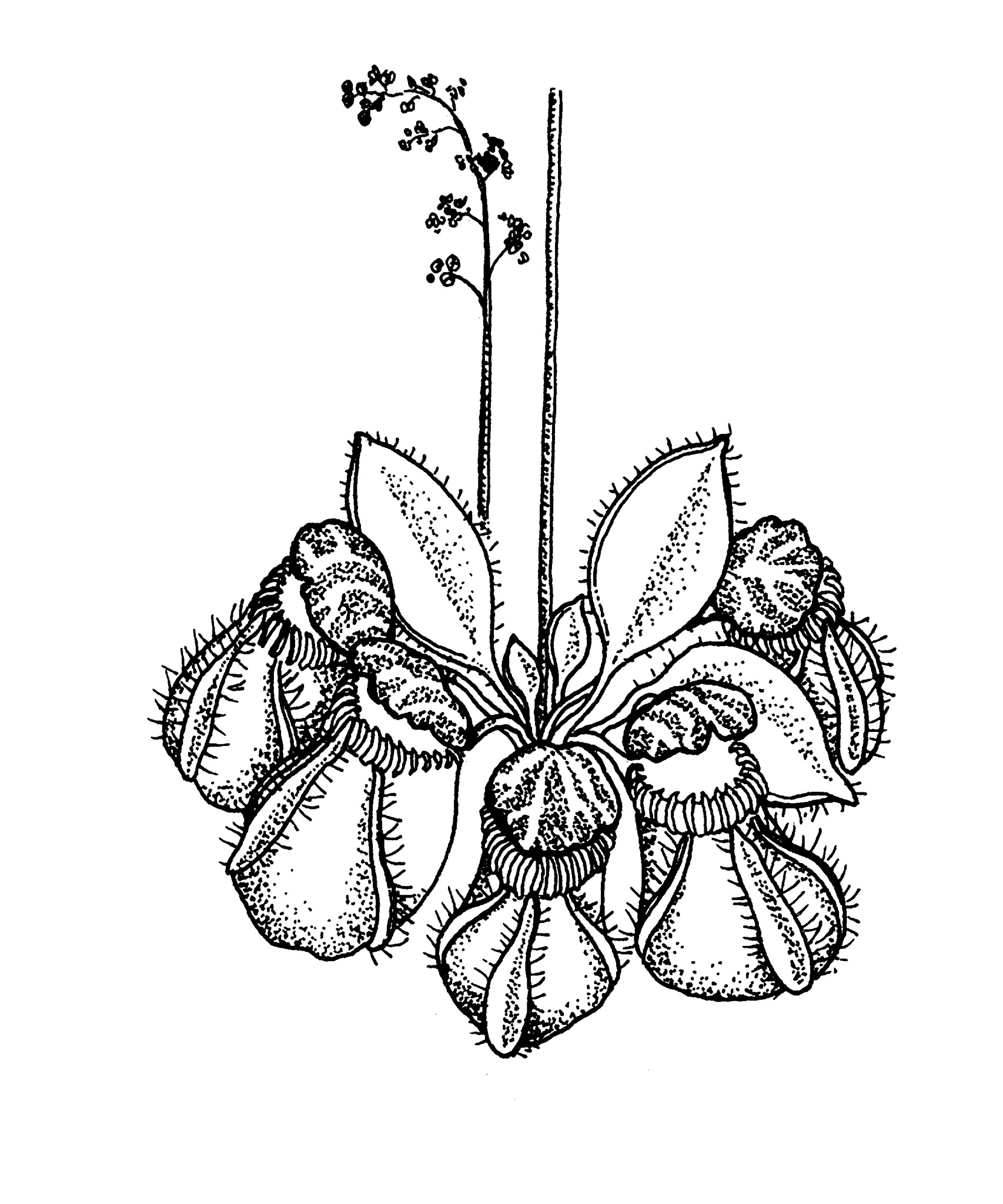
Insectivorous perennial herb with a short, thick, branching rhizome. Leaves in a basal rosette, the inner ones simple and flat, the outer ones modified into lidded green to red or bronzish red pitchers about 4-6 cm long, the inner surface slippery and with a layer of backward-pointing projections to trap prey. Flower cluster arising from the centre of the leaf rosette on stalks to about 50 cm long. Flowers small, about 4 mm wide. Sepals 6, white. Petals absent. Stamens 12, in 2 unequal whorls of 6; summer. Ovary superior, of 6 carpels, each with 1(2) ovules; styles curling. Fruit a hairy follicle.
This family is considered to be closely related to the Crassulaceae and Saxifragaceae.
A carnivorous plant grown for the insectivorous pitchers.
1 genus with 1 species from SW WA.
Seed, division and leaf node cuttings.
Outer leaves modified to form insectivorous pitchers.
Source: (2002). Cephalotaceae. In: . Horticultural Flora of South-eastern Australia. Volume 3. Flowering plants. Dicotyledons. Part 2. The identification of garden and cultivated plants. University of New South Wales Press.
